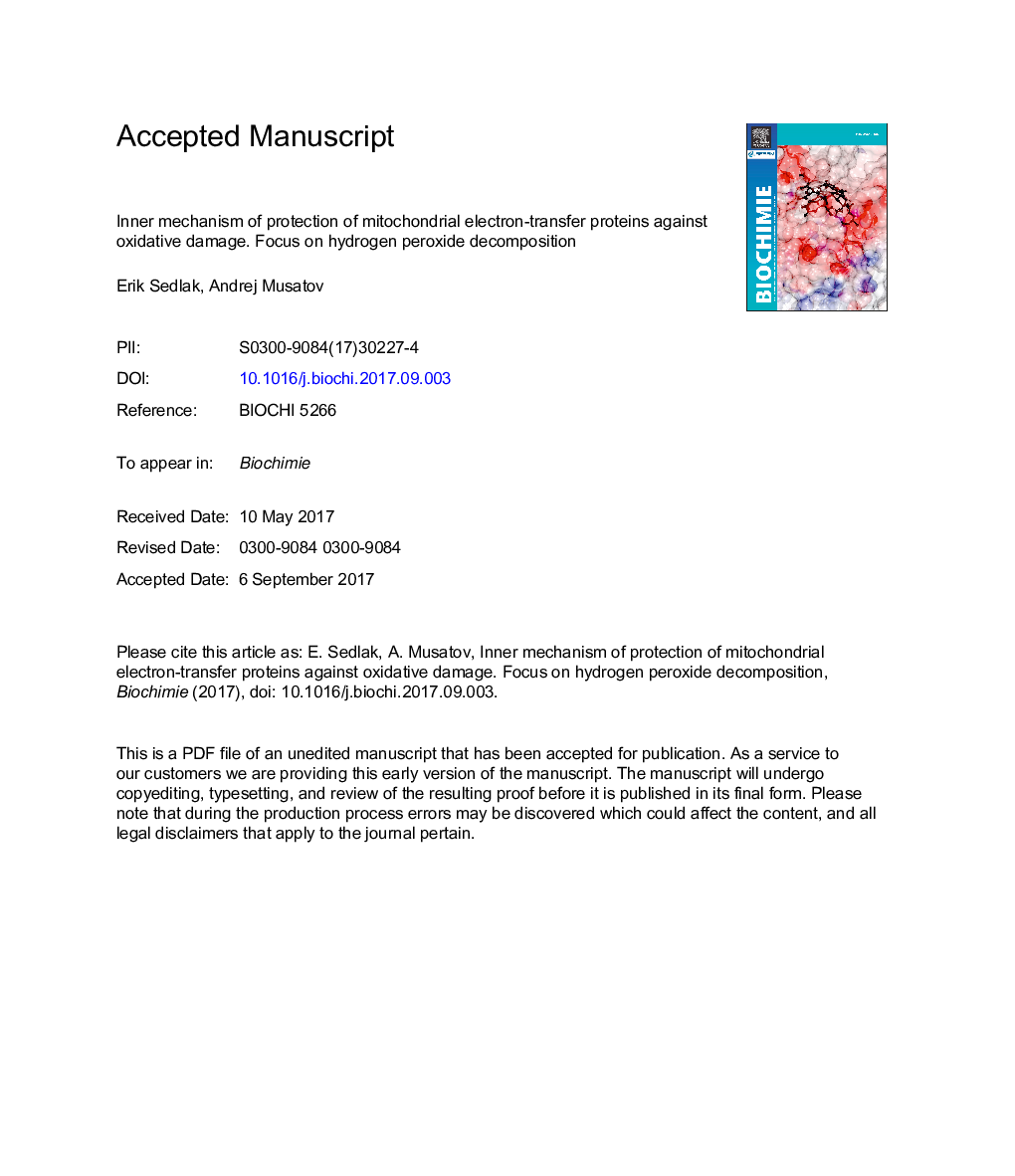| Article ID | Journal | Published Year | Pages | File Type |
|---|---|---|---|---|
| 5508888 | Biochimie | 2017 | 24 Pages |
Abstract
It is generally recognized that the mitochondria are the major source of reactive oxygen species including hydrogen peroxide (H2O2). Although the local concentration of H2O2 near the electron-transfer chain is potentially quite high, the chain's components are rarely found to be significantly damaged by H2O2. Our experimental data, as well as the data published by others, suggest that mitochondrial electron-transfer proteins, which are in the first line to be harmed by ROS, are well prepared to defend themselves. One of such protection mechanism involves peroxidase/catalase-like activity of all major mitochondrial respiration chain players, which catalyze the decomposition of H2O2. Understanding the molecular mechanisms, by which mitochondrial electron-transfer proteins might defend themselves against an oxidative stress and therefore being a part of the mitochondrial antioxidant system, can help to clarify many controversial experimental data.
Keywords
Related Topics
Life Sciences
Biochemistry, Genetics and Molecular Biology
Biochemistry
Authors
Erik Sedlak, Andrej Musatov,
